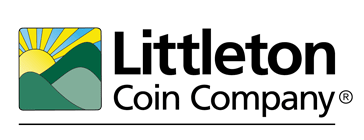
Three Presidential Political Tokens & Medals:
The Campaigns of 1856 & 1864
In the early days of presidential campaigns, candidates did not travel. They would stay at home and entertain important visitors, leaving their political organizations to promote their candidacy. Local party supporters organized events and would speak on behalf of their candidates. Song lyrics were written and published to celebrate the candidate. Broadsides, cards and prints were created and published. Most newspapers in the United States, at the time, were political instruments of a particular party, and often said so clearly in the masthead. Party newspapers would publish editorials and articles to help sway the voters.
In that same vein, medals and tokens were widely distributed to promote political candidates. The tokens & medals are coin-sized and usually feature the image of the candidate, offering historic reminders of early mid-19th century political campaigns. Collecting American political tokens and medals is a natural extension of coin collecting – they’re history you can hold in your hand!

John C. Fremont
A political first
Most of us think of Abe Lincoln as the first Republican Party candidate – but that distinction belongs to John C. Fremont. Fremont ran for president in the campaign of 1856, before the U.S. Civil War. A lieutenant in the topographical engineers unit of the U.S. Army in 1838, Fremont headed five expeditions to explore the American West. Later, he would discover gold on land he’d purchased in California, near Mariposa in the Sierra Nevada foothills. Soon after, he was a multimillionaire.
Following California’s admission to the United States, Fremont was elected as a senator. He also led an expedition for the Army to Utah territory. At that point a well-known politician, he was selected by the newly-formed Republican party as their presidential candidate. The John C. Fremont white metal token shown here dates from this first Republican Presidential campaign of 1856. The party slogan was “FREE SOIL, FREE SPEECH, FREE LABOR, FREMONT”. Looking at the token today, 168 years later, this requires some further explanation.
Decoding the mottoes
The first three slogans on the token – free soil, free speech, free labor – hail from an earlier political party, the Free Soil Party (1848-1854). Opposed to expansion of slavery into the new western territories of the United States – Kansas and Nebraska – as well as California, this group was influential in mid-century American political thought. The Free Soilers would be absorbed into the new Republican Party by 1854.
FREE LABOR refers to the thought that Northern free labor was economically superior, and morally more justified than the unpaid and exploited laborers of the South.
In late May of 1864, John C. Fremont was nominated again for president by a new political party, the Radical Democracy party, with General John Cochrane for vice president. The Radical Democracy party was formed by a fringe wing of the Republican party that was opposed to the conduct of the war by Lincoln and his generals. John C. Fremont himself was in favor of “combat without compromise,” and desired to confiscate Confederate property. The new party championed a constitutional amendment for the abolition of slavery, a one-term presidency, and election of the president by direct popular vote. Several months later, Fremont withdrew his name from the ticket, and threw his support to President Abraham Lincoln’s candidacy for re-election.
1864 Democratic candidates token
Opposing Lincoln in the Election of 1864, the Democratic Party nominated George B. McClellan. McClellan would go on to reject the Democratic Party peace platform, which declared the Union war effort to be a failure. In the end, the war efforts turned, and President Lincoln would win re-election handily by more than 500,000 votes (and the electoral vote margin by 191 votes). George McClellan would later serve as governor of New Jersey.
This George B. McClellan token features an early use of photography on a campaign token, with small ferrotype photos of General McClellan and his vice-presidential running mate, George Pendleton. In 1864, McClellan was well known as the former commander of the Army of the Potomac, charged with protecting the nation’s capital in Washington, D.C. President Lincoln did not agree with McClellan’s delaying defensive posture in Virginia, instead preferring a more aggressive movement of Union forces towards Richmond. In frustration, Lincoln removed General McClellan from command. Vice-Presidential candidate Pendleton had represented Ohio in both houses of congress, and is remembered as the sponsor of the Pendleton Civil Service Act (1883) which created today’s civil service system.

1864 Presidential ticket featuring McClellan and Pendleton

Voters during the 1864 presidential election
1864 Lincoln and Johnson token
In the election of 1864, war-time President Abraham Lincoln ran for re-election as the National Union Party candidate, with Andrew Johnson as his running mate. The National Union Party was the name the main faction of the Republican Party adopted in 1864, joined by War Democrats (the Democratic party was split into factions, pro-war and anti-war. Rallying around “Union” allowed the pro-war democrats to avoid the “Republican” moniker.) Considered a Civil War Token (Baker-383, Appleton-198), this white-metal piece has the inscription “LINCOLN & JOHNSON” on the left of Abe’s left facing bust, and “UNION CANDIDATES” on the right, with the date “1864” beneath. The reverse features a small bust of George Washington in the center, with rays that make a five pointed star. “FREEDOM TO ALL MEN” and “UNION” are inscribed at the bottom. These tokens also exist with holes for suspension on a ribbon, and were made in white metal, brass, copper and silver. This is a scarcer token.

1864 National Union Party candidates Lincoln & Johnson
Abraham Lincoln was the ultimate winner of the 1864 election. For collectors of coins and paper currency, his likeness is one of the most recognizable thanks to the long running 115-year-old Lincoln cent series. Lincoln was one of the few Americans to have his likeness on our paper currency during his lifetime (see the 1861 $10.00 Demand Note below, issued by the United States during the first year of Lincoln’s presidency).


First National Bank of Gettysburg $5 National Bank Note

$5.00 facsimile bank note featuring Lincoln & Johnson
Here’s one of my favorite Lincoln notes, from my own collection. It’s a particularly appropriate collector note – Lincoln delivered the famed “Gettysburg Address” at the dedication of the Gettysburg battlefield cemetery in November 19, 1863, not far from this downtown bank. I am partial to all things connected to Gettysburg as I graduated from Gettysburg College with a Bachelor of Arts degree in History.
Also from my own collection is a facsimile $5.00 bill issued for the March 4, 1865 Lincoln-Johnson Inauguration. After the November 1864 election was settled, these advertising facsimiles were offered to merchants at the rate of $10.00 for 1000 pieces. Merchants would place their own advertisement on the back and distribute them as souvenirs. Of course, today these are very scarce and valued collectibles.
Lincoln’s likeness on U.S. bank notes is extensive, particularly on the $5.00 bill. His image appears on every type of large-size and small-size $5 note for the last 110 years, and of course is on the current $5 you may find in your wallet. If you were to go on a currency collecting pursuit of Lincoln, the penultimate prize would likely be the $500 Gold Note of 1882, with an estimated 175 to 200 known. It is featured as number 49 in the Q. David Bowers and David M. Sundman book 100 Greatest American Currency Notes, released by Whitman Publishing in 2006.

